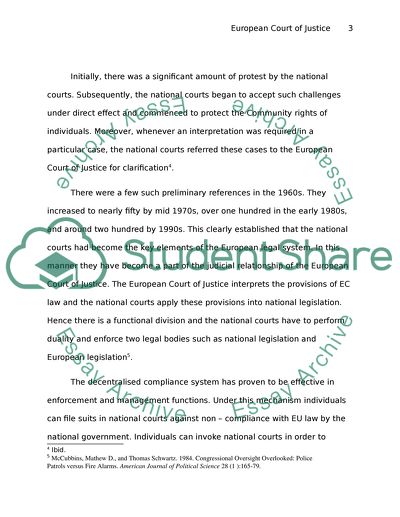Cite this document
(“Article 234 EC Treaty and the European Court of Justice Research Paper”, n.d.)
Article 234 EC Treaty and the European Court of Justice Research Paper. Retrieved from https://studentshare.org/law/1541898-produce-an-essay-on-the-following-question-to-what-extent-has-article-234-of-the-ec-treaty-ex-177-been-utilized-by-the-european-court-of-justice-to-create-principles-of-law-that-are-binding-on-all-member-states
Article 234 EC Treaty and the European Court of Justice Research Paper. Retrieved from https://studentshare.org/law/1541898-produce-an-essay-on-the-following-question-to-what-extent-has-article-234-of-the-ec-treaty-ex-177-been-utilized-by-the-european-court-of-justice-to-create-principles-of-law-that-are-binding-on-all-member-states
(Article 234 EC Treaty and the European Court of Justice Research Paper)
Article 234 EC Treaty and the European Court of Justice Research Paper. https://studentshare.org/law/1541898-produce-an-essay-on-the-following-question-to-what-extent-has-article-234-of-the-ec-treaty-ex-177-been-utilized-by-the-european-court-of-justice-to-create-principles-of-law-that-are-binding-on-all-member-states.
Article 234 EC Treaty and the European Court of Justice Research Paper. https://studentshare.org/law/1541898-produce-an-essay-on-the-following-question-to-what-extent-has-article-234-of-the-ec-treaty-ex-177-been-utilized-by-the-european-court-of-justice-to-create-principles-of-law-that-are-binding-on-all-member-states.
“Article 234 EC Treaty and the European Court of Justice Research Paper”, n.d. https://studentshare.org/law/1541898-produce-an-essay-on-the-following-question-to-what-extent-has-article-234-of-the-ec-treaty-ex-177-been-utilized-by-the-european-court-of-justice-to-create-principles-of-law-that-are-binding-on-all-member-states.


